Proposed Changes In Special Education
The New York City Department of Educationhas announced its proposed plan to restructure special education, the latest in Mayor Michael Bloomberg’s and Chancellor Joel Klein’s far-reaching shake-up of the city’s school system. The plan, which is scheduled to go into effect by the next school year, will affect some 120,000 city students who are disabled or who otherwise require special education services.
Like the other education reforms that have been announced since February in the Department of Education’s “Children First” agenda, the special education plan is based on the primary goals of increasing efficiency in order to free up resources that will lead to higher student achievement; improving accountability; and standardizing instructional practices throughout the system.
Special education students in New York City are at the gravest risk of educational failure. (See previous topic page updates, “Special Education” and “The Policy, but not the Practice, of â€Inclusion’” ).
The mayor and chancellor clearly recognized this record of failure when they announced their new package of reform proposals for special education. (For details see their press release)
Parents and others met their initial announcement with some skepticism. As noted in Advocates for Children’s bi-weekly Insideschools e-mail alert, special education advocates called the goals “worthy” but, before specific details were released, were also dubious about the potential for real long-term improvement based on the city’s poor track record in implementing previous reforms.
Instructional Reforms
The two most significant features of the Department of Education’s special education instructional reform strategy are: (1) the creation of 200 “Instructional Support Specialist” positions throughout the city and (2) the implementation of uniform, research-based curricular models in reading and math, similar to the new instructional models for general education classrooms in most city schools.
The 200 instructional support specialists will serve primarily to support special education teachers in teaching the new standardized curriculum. .
The first of the two standardized curricular models is the Orton-Gillinghamreading program, a national research-based model described by the department as “a multi-sensory reading approach that has proven successful with emergent readers [and] students with disabilities.” The Inside Schools update described the Orton-Gillingham method as “structured lessons in phonics” that encourage students “to see, hear, and even touch letters.”
The second instructional model is the Schools Attuned Program, described by the department as “a system of supporting strategies for accommodating diverse learners” and “effective both with children with disabilities and…struggling learners.” Both of these models are designed to supplement, not replace, the standardized citywide math and reading curricula that will be implemented in most city schools.
In addition to the 200 instructional support specialists, 1000 special education teachers will be trained in these two models in the 2003-2004 school year.
There is some concern among advocates because the Orton-Gillingham program has proven most effective when teachers are trained in costly small group settings. Questions have been raised about whether the city has the resources to provide small group trainings and about whether this strategy of training by teachers rather than by the program’s developers will be effective.
New Accountability
The department’s plan aims to improve accountability both on the level of the individual school and at the district level through a combination of support systems for school principals, funding targeted to poorly performing schools, and performance incentives.
The city plans to hire 50 “administrators of special education” to support principals in providing timely and effective services to special needs students and ensure compliance with various legal mandates. Five of these administrators will be assigned to each of the ten new regions, which replace the community school districts. Each administrator will supervise the special education programs in up to 12 schools.
Several million dollars will also be earmarked toward both poorly performing schools to develop corrective action plans and to reward high performance by schools that exceed the achievement benchmarks established in the plan.
Additionally, the existing school improvement program will be overhauled to include these clear new benchmarks and to provide other support to schools with the lowest performance levels.
One of the more controversial proposals in the plan is a proposed “streamlining” of the student evaluation process, which has two major provisions. Until now, special education students and their parents met with school officials to devise their individualized education plans, first at the school level and then at the district level with a Committee on Special Education. The first provision of the department’s plan will reduce the number of committees across the city from the current 37 to a proposed 10. To accompany this reduction, the second component of the plan will shift many of the responsibilities now held by these committees to the school level, and most students’ plans will be developed solely at the school level.
The district contends that these changes will improve efficiency, reduce redundancy, and make the student evaluation process less confusing for parents of special needs students. While this may, as the city hopes, increase convenience and eliminate “unnecessary bureaucracy,” some parents and advocates are not so sure. First, there is concern that even with reduced responsibilities, 10 committees on special education will have more responsibilities than they can handle and simply be too large—geographically and bureaucratically—making it more, not less, difficult for parents to navigate the system. Moreover, the increased concentration of decision-making at the school level has also raised eyebrows among those concerned that the potential costs of increased convenience will be too much control by individual school administrators (who may lack the time, expertise, or resources to meet students’ specific needs) and less flexibility in designing programs catered to students’ individual needs.
Governance changes: Status of District 75
With the major reorganization in the governance structure of the city’s schools and districts, there has been some question about the future of District 75, the special district that serves the city’s 20,000 most profoundly disabled students. The proposed plan, while making organizational changes to District 75 will leave the district intact as a separate entity. Most of the structural changes are apparently designed, however, to fit District 75 into the city’s new school governance system.
Among the key administrative changes in District 75, administrative staff will be reorganized into supervisory school clusters that will closely parallel the system-wide organizational structure. As in the other changes for both regular and special education, District 75 will also adopt standardized math and reading curricula for the small number of District 75 students who participate in standard assessments and will hire instructional “coaches” that will train and support teachers and administrators in curricular models, behavior management, and other instructional issues.
Joseph Wardenski is the senior research analyst at the Campaign for Fiscal Equity. Any views expressed in this column are his own.
Talking To Kids About War
A child development specialist in Indiana was recently told by 40 percent of the children she interviewed that their parents had not spoken to them about the war. Is it possible that New York City kids are experiencing the same silence at home?
The New York City Department of Education has posted guidelines for parents and teachers for talking to children about war.
GUIDELINES FOR PARENTS
According to these guidelines, prepared by the National Center for Children Exposed to Violence at the Yale Child Study Center, adolescents need a variety of opportunities to talk about their feelings, when they are ready, without forcing them. School-age children, too, benefit from being asked about their feelings and what they’ve heard, and given accurate information in response to their comments and questions. For toddlers and preschool children, remaining calm and maintaining the ordinary routine of life is what helps.
As expected, watching too much television coverage of war, violence and terrorism, especially graphic images, can be harmful to children of all ages.
Parents need not worry about knowing exactly the right thing to say, according to the guidelines. "There is no answer that will make everything okay." But avoiding the discussion altogether can cause harm. "Silence won’t protect them from what is happening, but silence will prevent them from understanding and coping with it."
TEACHERS AND STUDENTS
The Board of Education guidelines for teachers stress that children with friends or family members involved in Iraq or in military service may have difficulty with discussions about the war, as will students with prior traumatic experiences (such as 9/11). Students might avoid telling their classmates or teachers that family members are in military service so teachers are encouraged to conduct all classroom discussions assuming that some of their students are personally affected.
Teachers are also urged not to impose their own political beliefs on students, to allow for differing viewpoints during discussions, promoting tolerance for different opinions.
Children may find it comforting if they can figure out ways to be helpful at this time. The guidelines suggest encouraging children to think about how they might want to do, allowing them to decide what would be most meaningful.
OPEN A DISCUSSION
The New York University Child Study Center has a similar set of guidelines, "Talking to Kids about Terrorism or War," written by Robin Goodman, Director of Public Education Programs, at NYU Child Study Center and Clinical Associate Professor at NYU School of Medicine.
Contrary to parents’ fears, writes Goodman, talking about violent acts will not increase a child’s fear. Having children keep scared feelings to themselves is more damaging than open discussion.
Regarding television and news reports, Goodman suggests watching or reading the news together as the best way for a parent to gauge a child’s reaction and open a discussion. The dialogue should allow for disagreement and airing of different points of view; feeling their opinion is wrong or misunderstood can cause children to disengage.
Adults can be honest about their fears, said Goodman, but must avoid distraught reactions so as not to scare their children or students.
LESSONS TO BE LEARNED
Cornell University has also contributed to the literature on this subject with "In America at War: Children and Parents Under Siege," written by James Garbarino, professor of Human Development at Cornell University and Co-Director of the Family Life Development Center.
Parents and teachers can use the present circumstances, suggests Garbarino, to teach children about justice, compassion, and revenge.
"Protecting the stigmatized from scapegoating and guilt by association is an important goal of public institutions in a time of national crisis" writes Garbarino. "In the wake of Pearl Harbor at the start of World War II we rounded up Japanese-Americans and detained them as suspected enemies of the state... .Understanding and compassion in the face of hate and fanaticism are virtues, not something to be afraid of. It is more than a matter of our good and their evil. Dehumanization is the enemy."
WHO IS TALKING TO THE KIDS
While teachers and parents are finding their way to talking to children about the war, children are talking to each other, even if only sending their thoughts out into the ether. A visit to Voices of Youth, a bulletin board set up by UNICEF for children around the world to communicate on the subject of war, allows us to hear some of those young voices. Here is a recent one from the United States (they identify themselves at the site by first name, age, and country, not city or state), twelve-year old Charlotte: "Does anyone here understand why we are at war?"
Meanwhile, high school students, only a few years older than Charlotte, are being contacted by military recruiters. A little-known provision of the new federal education law, No Child Left Behind, requires public and private high schools to provide names, addresses and phone numbers of their students to the armed forces; only Quaker schools or others with religious objections to military service are exempt. Young men who reach the age of 18 are already required to register with the selective service, but the new law gives military recruiters direct access to even younger children. Incentives offered to these teenagers to enlist in the military upon graduation from high school are scholarships to college and, particularly enticing to immigrant children, the right to immediately apply for citizenship, waiving the standard waiting period of three years for those in the military and five years for citizens. Fifteen and sixteen year old New Yorkers have already begun getting these calls and letters.
Perhaps parents and teachers should be speaking to them first.
Teachers Who Quit
Three teachers who left the city's schools tell their stories. 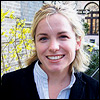 Christina Young Christina Young 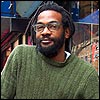 Michael Burns Michael Burns 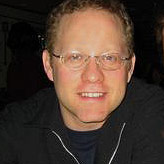 Daniel Ginsberg Daniel Ginsberg |
Nevertheless, a year later, Burns quit.
Every year, more than 11,000 of New York City's 80,000 public school teachers stop teaching. Some simply retire. Others, like Burns, get fed up.
Indeed, according to the United Federation of Teachers, 45 percent of all New York City teachers either quit the profession entirely in their first five years on the job or leave for a teaching position outside the city public school system.
The loss puts a strain on the city, which is burdened with a constant demand for new recruits (and the money to lure them). It also puts many students at a disadvantage. Not surprisingly, studies have found teachers become more effective after they have a few years of experience. One study concluded that students whose teachers had five years of experience made as much as 30 percent more progress in reading skills than those taught by first-year teachers.
In New York, the city's poorest children are the most affected. Their schools exhibit the highest turnover rates, they are taught by the least experienced teachers, and with few exceptions, they score lower on math and reading tests than their more affluent peers.
The grim economic outlook makes it unlikely that the city will battle the high turnover with what is generally considered to be the most effective tool: pay increases. Though the teacher's contract signed last summer provided a 16 percent across-the-board raise, it expires this spring, and with hundreds of millions of dollars in education cuts looming with a budget deficit in the billions, the city will be hard pressed to provide any more substantial raises.
The good news is that money isn't everything. According to Richard Ingersoll, of the Center for the Study of Teaching Policy, teachers are less likely to leave their jobs – no matter how poor their students – if their school offers them:
| • | Strong administrative support during their first two years on the job |
| • | Involvement in school decision-making |
| • | A well disciplined student body |
Meanwhile, three teachers who quit explain why.
-- Yaniv Nord
Focusing on Appearance
By Christina Young
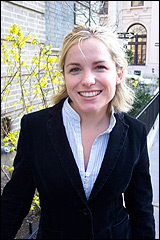 I taught fifth grade at P.S. 65 in the Bronx for two years, and I believe that if my administration had been different I would have stayed longer.
I taught fifth grade at P.S. 65 in the Bronx for two years, and I believe that if my administration had been different I would have stayed longer.
My first week, I arrived to 33 fifth graders in my classroom and not enough desks. I had a kid banging his head against the closet, one who ran away, one who hid under a table for an entire day, one who cursed at me. In all the cases, I called down to the office for assistance, and no one ever came up. A gym teacher who had been in the school for 17 years was placed in my classroom, but he just sat in the back and slept.
Eventually, a veteran teacher came to me and said, "When you need something, ask me, because the administration is never going to help you."
One of my main frustrations with the school was that I had chosen to teach at P.S. 65 after being told by the principal that her focus was on the kids, but in reality it was on the appearance of success and order, and on standardized tests.
I once got a phone call saying, "The superintendent is on the way up, take out "Success For All," a reading program that my class hadn't touched in weeks. When the superintendent arrived, we pretended to be working on the program. The kids, of course, knew exactly what was going on. It was horrifying.
Another time, there was a principal's conference in our school, and we were told to skip six weeks ahead in our math lessons in order to create the illusion of being on schedule.
The focus on appearance affected everything. A favorite topic of faculty meetings, for example, was the state of our bulletin boards. Charts, we were told, had to go up. Charts had to come down. Projects needed to be hung. Boards needed to have themes. Boards needed to match by grade. If your kid wrote a five-page paper that was going up, there could be no errors. New bulletin boards had to go up every 3.5 weeks. In my first year, I was publicly reprimanded for the appearance of my bulletin boards and would receive notes on the general state of my classroom.
Never once, however, was I asked about the projects we were working on, about the books my kids made, the poems they wrote, the food and clothing they saw when we studied westward migration, or the computer presentation they had created after I snuck them into the technology lab. My room had projects hanging from the lights, things to read, things to touch, work that the kids had made. It was exciting, it was ours, and we were so proud of it, but all my principal could say was, "Now, look around here, is this really as neat as it could be?"
In a school that averaged 18 to 23 percent of students at grade-level, 50 percent of my students were on track after my first year. I am not sure what all the factors that lead to this were, but I went from being the administration's she-devil to being praised in public in front of all the other teachers. Earlier in the year I had been yelled at during staff meetings and was told that I had failed my kids.
During my first year, I spent $5,000 of my own money on special project materials, museum trips, IMAX movies and books. I'm currently being audited by the Internal Revenue Service for declaring it as a business expense.
Christina Young was a New York Teaching Fellow from 1999 to 2002. She is now studying law and hopes to one day get involved in education policy.
Products of a Broken System
By Daniel Ginsberg

When I used to tell people in New York that I was a teacher, they responded as if I did volunteer work. If I had made more than $30,000 I might have argued with them.
My first year I made $29,800. I started late in October and was already the fifth science teacher my students had had that year. I did not teach a violent population -- they weren't bringing knives into the school or anything -- but they were tough, neighborhood kids who had grown up in New York City in the height of the crack epidemic. Some of their mothers were addicts; some had lived in homeless shelters. I had kids who were living in domestic abuse shelters. It was a tough population.
The kids I taught, as I saw it, were products of a broken educational system, and they were not prepared for classroom work. I felt like I had walked into a situation where I had to do eight years worth of teaching in one semester. It was a daunting task. The feeling I got was, "Do the best that you can with these kids," rather than, "Make these kids excel."
But that was the reality. You can't teach eighth grade kids about molecules when they read at a third grade level. You can't teach chemical equations if they don't know how to add. I was constantly getting to a point in my lessons, walking three miles back and then slowly returning to the starting point.
In my first year, I spent nearly $1,000 out of my own pocket. The science class had no supplies, not even the basic tools of measurement. I would buy magnifying glasses at dime stores, posters for the walls, clay to build things. We raised a lizard in the classroom, so every week there was lizard food to buy.
Also, I scavenged. Anything that I found, I brought to my classroom. I had closets full of junk. When kids got into trouble, I would have them organize it. In my physics class we were studying electricity, and out of soda bottles, wood, electric tape, nuts, bolts, miniature engines that I pulled out of things in the street, we made cars and boats that worked, with chopped up compact disks as propellers. Out of soda bottles, cotton puffs and balloons, we made molecules.
I would wander around to all the elementary school classes and ask for their stuff. I was a beggar. You got any crayons? You got any straws? And they knew that when I came around, they should start digging in their closets. But we built a greenhouse out of stuff I had scavenged.
What would have kept me in this job? If my master's degree had been paid for, I would have stayed, and if I was making a salary that was even remotely in line with the difficulty of the work I was doing, I would have stayed.
Daniel Ginsberg taught science at P.S.51 in Hell's Kitchen from 1996 until 1999. He now develops computer programs used by school districts across the country.
Discouraging Curiosity
By Michael Burns
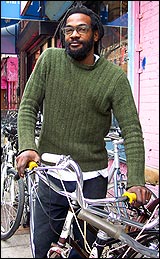 Teaching is a life experience. From my first breath in the morning, to my dreams when I slept, it affected every part of me. I left, in the end, because I was completely burned out on the futility of the model that we use.
Teaching is a life experience. From my first breath in the morning, to my dreams when I slept, it affected every part of me. I left, in the end, because I was completely burned out on the futility of the model that we use.
When I got my first assignment, the administration was just happy to have someone to keep the kids in the room. It was a complete throwaway class -- 18 kids with disciplinary problems bad enough that the school had decided they were too disruptive to be in regular classes. So they took them and put them all in one room, and because these kids were deemed "problem kids," they didn't get to move from class to class and subject to subject. I taught all subjects to them. It was ludicrous -- I was originally hired to teach math.
The kids fought, they cursed, they punched lockers, they spit on me, but I came to understand they acted in that way because all the messages they had received up until that point had told them to. They were just a reflection of their society at large. It wasn't their fault that public education was a mess.
The system discouraged intellectual development. It wanted rote answers, wanted everything to be nip and tuck, and as a result our lessons disregarded the "Why?" of learning. Intellectual curiosity and intellectual investigation had been completely removed. We had 44-minute teaching periods, split sessions, average class sizes of 33, terrible food in the cafeterias and completely confusing bell schedules.
By my third year, I was teaching my students out of an old college statistics textbook. I had them put their books away and photocopy pages out of mine. We developed hypotheses, collected data, plotted graphs and started to actually do research and case studies on other classes in the building. These were eighth graders who were going out and doing sociological and statistical inquiry --- just because I told them that they could, and so they believed that they could.
Everybody can learn, it's just a matter of the model adapting to them rather than them being forced to adapt.
In the end, I left because I couldn't grow to be the type of teacher I wanted to be in that environment. The public school system was too closed, too insular, too regimented and too standardized.
To be a good teacher is so much more than to stand up in front of a classroom. There is the saying "Those that can, do, and those that can't teach." That resonated with me the third year. I thought, "I don't know enough, I'm not mature enough, I have not experienced enough raw living to be able to stand in front of a classroom of kids and teach and be able to understand where they are coming from." And the public school system was too insular a place for me to gain that experience.
After I left the Board of Ed, I started working at Project Green Hope, which is a residential treatment program for drug addicted women, an alternative to incarceration. I went in and wrote a high school equivalency curriculum for them from scratch, and it is still being used.
Now, I am working in a bike shop in Brooklyn, playing music with a number of bands, I have gotten married and just had my first kid. I have started teaching again, too -- part time, at one of the city's welfare-to-work programs. I teach Adult Basic Education and General Education Development.
Michael Burns taught mathematics at I.S.90 in Washington Heights for three years. Originally from Arkansas, he arrived in New York City with Teach For America's class of 1996.




